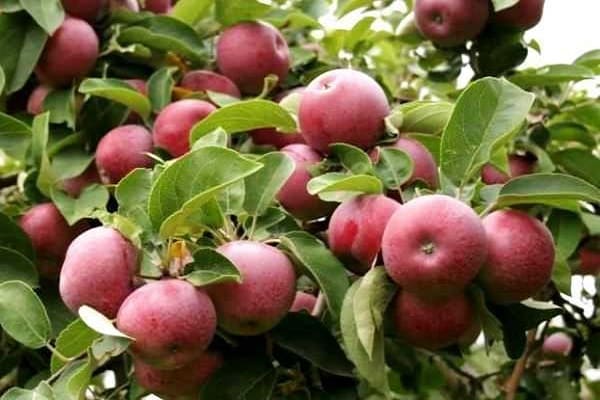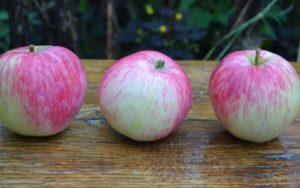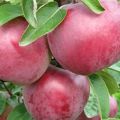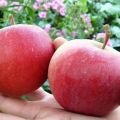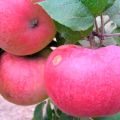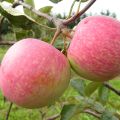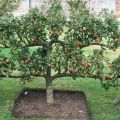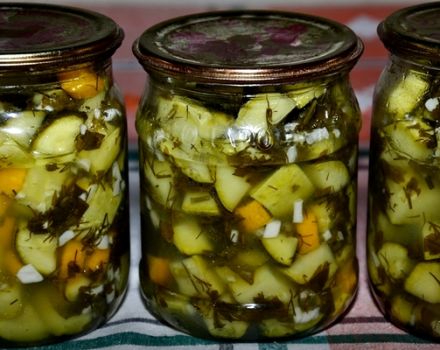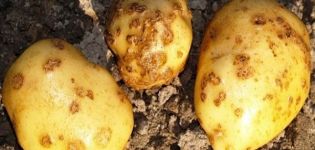Description of the variety of apple trees Tolunay and characteristics of frost resistance and yield
In the conditions of the Siberian climate, not all fruits and berries are capable of ripening, so breeders are tirelessly working to develop new varieties adapted specifically for this region. The Tolunai apple tree is especially popular among both amateur gardeners and professionals.
Description of the variety
The description of the Tolunay apple variety suggests that the tree grows small and does not cause discomfort to other horticultural crops. The crown is not prone to thickening, but needs periodic pruning. Its shape is rounded, branches in relation to the main trunk are located at right angles, directed upwards. The bark is brown in color.
The frost-resistant apple variety Tolunay has rich green leaves. Their shape is slightly rounded, there are small notches along the edges.

Description of fruits
The fruits of the Tolunai apple variety are located in several pieces on the trunk. The weight of one of them does not exceed 110 grams, but there were specimens of 130 grams each. The fruit is truncated-conical with a slight ribbing. At the stage of technical ripeness, the apples acquire a golden yellow color with beautiful dark red or burgundy stripes.
The pulp of Tolunay apples is very juicy and tender, medium in density, colored in a delicate creamy color. The taste is excellent. The fruits have a pleasant sweet and sour taste and a rich classic aroma. The seed capsule is in the center of the fruit. At the stage of technical ripeness, the seeds of the Tolunay apple are colored brown.
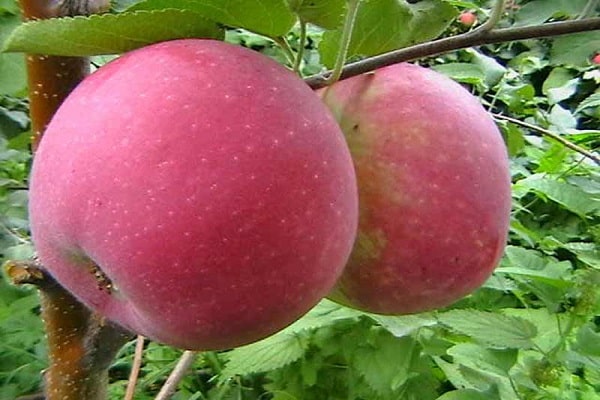
The fruits contain:
- vitamin C - 11 mg;
- sugar - 13%;
- dry matter - 16.5%;
- acidity - 0.4%.
Professional tasters rated the taste of Tolunai apples at 4.8 points.
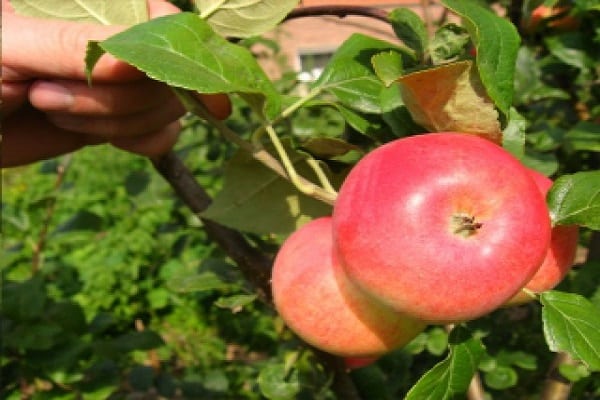
Fruiting
The Tolunai apple tree belongs to the mixed type of fruiting. The first harvest can be enjoyed 4-5 years after planting a young seedling. In the first two years, up to 6 tons of apples with high commercial indicators are harvested from one hectare. Over time, yields increase. Within 7-9 years after planting, each apple tree is capable of producing 25 kg of high-quality harvest. Tolunai has regular fruiting, and the yield is high.
If the apple tree tries to start bearing fruit in the first year after planting, then all the inflorescences must be cut off. This will help the seedling to root well and get stronger.
Fruit ripening in Tolunai occurs at the end of summer or the very beginning of autumn. That is why the variety is considered late summer. The apple tree is not prone to falling off. For bookmarking for long-term storage, choose only whole fruits without mechanical damage, visible deformations and signs of damage or disease.
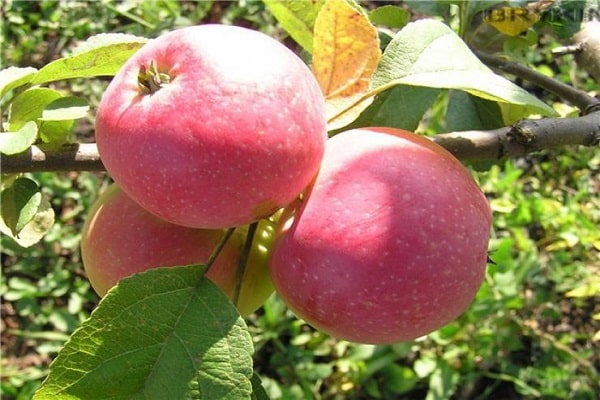
Tolunay has an average keeping quality.After 3 months, apples lose not only their presentable presentation, but also their taste. The optimal shelf life is 1.5 months. The fruits are great for eating as a whole, but are not suitable for making dried fruits. But the harvested crop can be used for all types of processing:
- juicing;
- cooking compote or jelly;
- making apple wine;
- cooking jam.
Due to the fact that the fruits of Tolunai contain a lot of pectin, they are widely used for making jelly, jam, mousse or jam.
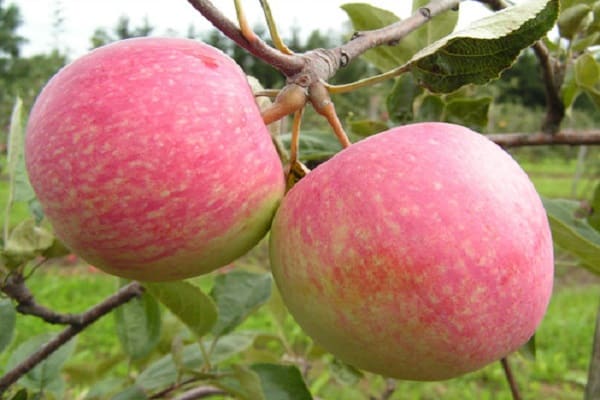
Disease resistance of the variety
Tolunay exhibits increased resistance to major diseases and is little exposed to pests. However, in adverse weather conditions, the harvest may suffer. If it is rainy and cool weather outside, then in order to prevent fungal diseases, it is recommended to spray the plant with Bordeaux mixture.
To prevent pests from encroaching on the apple tree, the trunk must be whitewashed with quicklime in a timely manner.
The Tolunai apple variety does not tolerate drafts, temperature fluctuations and long winters. But in care, the plant is fastidiously and wonderfully takes root after transplantation. The apple tree shows increased resistance to moniliosis, and only foliage is affected by scab.

In order for Tolunay not to be exposed to pathogens and to bear fruit well, it must be consistently and regularly fed. The plant needs nitrogen before fruiting begins. When planting an apple tree, superphosphate, any humus and peat are added to the hole. Be sure to do annual sanitary pruning of the tree.
Pollination
An apple tree of a frost-resistant variety called Tolunay has free pollination. Planting and caring for this plant does not cause any difficulties. The survival rate of seedlings is good.
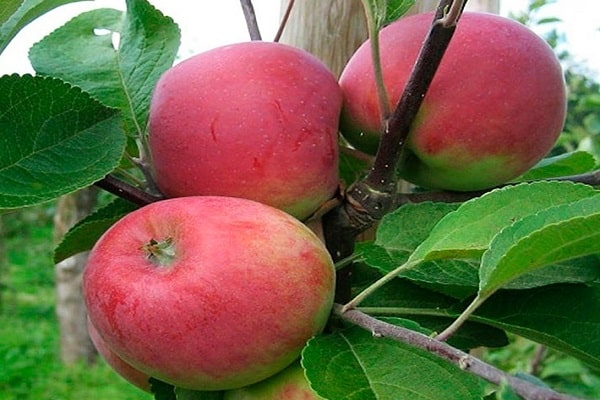
Winter hardiness
The Tolunai apple varieties can withstand a significant drop in temperatures in winter. By right, the tree is considered frost-resistant, however, for the harsh Siberian climate, this indicator received only an average score. If the air temperature drops below -40 ° C, then the flower buds, wood and bark of the apple tree freeze.
